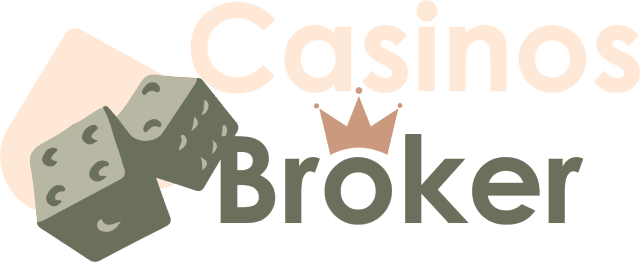Should We Disclose our Revenue, SDE & EBITDA in Our Ads?
Certainly, you might be wondering whether to showcase our revenue, SDE, or EBITDA in our advertisements while presenting our business for sale. Our narrative is truly compelling, yet there’s a balance to strike – while disclosing revenue and net profits upfront might appear to overshadow our story, rest assured that our approach ensures potential buyers grasp the full picture. Rather than hindering, these figures supplement our remarkable journey, enhancing the intrigue for those who are about to delve into the remarkable narrative we have to share.
For small businesses, it’s generally advisable to include gross revenue and cash flow (SDE) details in your advertisements. (For mid-sized businesses, the process varies, and you can explore our guide on “Hunting vs. Fishing” to navigate the right selling approach.)
Online platforms for business sales typically offer a limited preview of essential information like asking price and cash flow. Cash flow holds particular weight on these preview pages as it’s a pivotal factor for potential buyers.
Revenue, SDE or EBITDA
The figures of revenue, SDE, and EBITDA wield substantial influence over whether a buyer pursues a given opportunity, or even commits to the purchase. Most buyers aim for a business with the lowest possible valuation multiple.
This perspective aligns logically. Imagine yourself as the buyer – wouldn’t you seek a business that maximizes your returns for the lowest investment? It’s natural to chase the highest ROI.
Certain business owners believe they possess a compelling narrative, hesitating to disclose revenue and cash flow in the ad, fearing their story might be overlooked.
The key is to find a balance that communicates the numbers while allowing your story to shine. The numbers provide context, enhancing the understanding of your remarkable journey.
Which of the following businesses catches your interest more: Business A or Business B?
Business for Sale Portal: Quick Overview
Business A
- Listing Title: Exceptional Service Business with a Remarkable Tale
- Asking Price: $3,000,000
- Revenue: $7,500,000
- Seller’s Discretionary Earnings (SDE): Not Available
- Description: An outstanding chance to own a business with an incredible narrative. With a three-year establishment,…
Business B
- Listing Title: Established B2B Service Business with 20 Years of Legacy
- Revenue: $7,500,000
- SDE: $1,000,000
- Description: The owner seeks retirement. This business specializes in crafting, vending, and dispersing educational toys for preschoolers…
Need more persuasion? Keep reading…
Why Won’t Buyers Listen to My Story?
Prospective buyers won’t delve into your full narrative unless they click to explore the details. Only the initial two to three lines of your ad copy are visible on the summary page, meaning a captivating beginning is crucial to entice clicks.
Any buyer inevitably realizes that every seller comes with a unique tale to tell. While each seller believes their story is distinct, buyers often encounter familiar narratives.
Empower your perspective by challenging it. Reflect on these inquiries:
- If your business is truly exceptional, why the decision to sell?
- If your compelling story promises revenue growth, why not retain it longer for increased value?
When narrating your story, aim for succinctness. Condense it into a 30-second sound bite. With online platforms, your ad title is limited to 5 to 10 words, and the preview page allows 50 to 100 words. Space is tight, requiring impactful initial words to captivate and pave the way for your story. Mastering the art of a swift narrative is key.
Remember, if you can’t instantly engage the reader, the opportunity to unfold your story diminishes. Swiftly conveying your story is paramount – not just for the buyer, but also for their consultations with family and advisors, shaping their final decision.
Bear in mind, capturing the reader’s attention in the first few seconds is the linchpin. If achieved, the path to advancing the deal opens up.
Selling Your Business — The Sales Funnel
Efficiently selling your business follows a parallel with a sales funnel strategy. Initiating the process involves cultivating an intrigued buyer – often the pivotal point of the entire journey. In the sales funnel paradigm, as you ascend its stages, the influence on the eventual outcome amplifies. Since capturing interested buyers constitutes the inaugural phase, its significance looms large, profoundly impacting your business’s sale prospects.
Dedicate time to fine-tuning your marketing and advertising approaches. Selecting accurate gross revenue and cash flow data may lack creative input and be swift, but crafting the ad copy and a compelling title merits considerable time investment. Despite its apparent simplicity, this phase’s role is anything but minor. Throughout history, luminaries like Ben Franklin and Henry David Thoreau have echoed the sentiment, “Given more time, I would have written a shorter letter.” Succinctness is a formidable pursuit, yet its value in captivating readers and kindling interest cannot be overstated.
It’s an Imperfect Marketplace
Online business-for-sale platforms have streamlined the process of selling businesses, benefiting both sellers and buyers with increased ease and accessibility. This expanded array of options and information has elevated buyer selectiveness and knowledge. Selling a profitable business at a reasonable asking price remains a straightforward endeavor. However, it’s essential to acknowledge that selling an unprofitable business with a narrative is more challenging today than a decade or two ago.
Does omitting gross sales or cash flow from your business sale advertisement lead to favorable outcomes?
Numerous attempts in the past have shown that this approach yields limited results. Without disclosing gross sales and cash flow figures, potential buyers often assume minimal revenue, discouraging them from exploring further.
Why the emphasis on scrutinizing SDE and EBITDA when seeking a business to purchase?
Given equal circumstances, would you opt for a business with $100,000, $1,000,000, or $10,000,000 in annual profit? While buyers do value your narrative, comprehending and investing in that story takes time. On the other hand, cash flow can be assessed in an instant through an online ad. Crafting a compelling business story is a challenge even within an hour-long conversation for most sellers.

